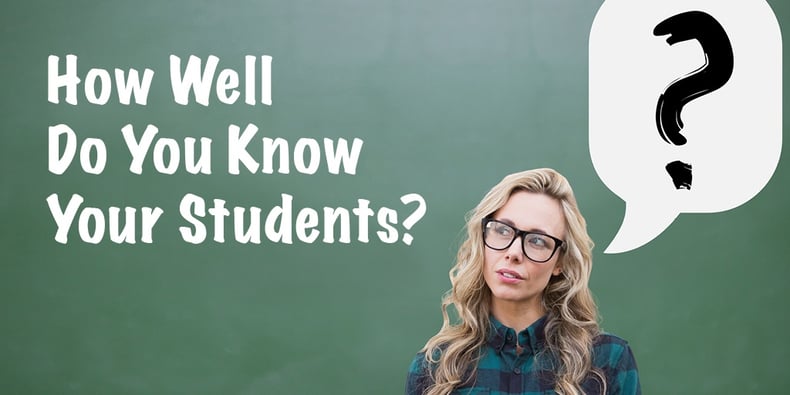
One of the most critical factors for student and classroom success—especially early in the year—is connecting with our students. As one of my favorite principals used to tell me, “They don’t care how much you know until they know how much you care.” I have found this to be very true.
Our most challenging students have probably had adversarial relationships at school in the past. This pattern is usually cyclical—adults in their past may have reacted to their behavior with impatience, frustration, or disappointment. These reactions cause students to behave even more poorly, which results in even more frustration.
If students do not trust the adults in their life outside of school, they will also struggle to trust those in the school setting. This means it is even more critical for educators to build strong connections and trusting relationships from the very beginning of the year.
How Can I Bond With My Students?
Here is a litmus test of sorts for how well you have connected with your students thus far in the year. If many of these answers are “no” or “very few,” it is not too late. By asking some of these questions, a teacher can still build bonds with students.
Think of your homeroom class or the group of students you affiliate with the most. If you work in a secondary school, you may have a consistent group that you see. If there isn’t a group that stands out, pick your first class of the day. Answer the following questions with the number of students that you would answer “yes” to.
Of the students in this group, how many of the following personal facts do you know:
- Can you give their first and last names if you see them in the hallway? Names are crucially important. If the answer to this one is less than 100%, fix this by tomorrow. There isn’t a good reason to not know each student’s name after the first week of school.
- Can you name one or both of their parents? Depending on the age, this one can be harder to discover. At some point in the year it is probably essential knowledge, but it may not be early on. It is good to find the answer to one of the next two questions and contact parents about that information. This shows that you have worked to get to know their student and it creates a positive start to a relationship.
- Can you name one thing they like? Look for what they wear, what they talk about, teams, logos, and what they play at recess. Or, just ask them directly what they like. This is a topic that most kids love to talk about.
- Can you name a strength of theirs? Of all the items on the list, this is probably most critical. Every student has strengths, but some of them don’t have strengths that are valued as much in a traditional school setting. By identifying these and naming them for the student, it both validates them as a human and gives the teacher a way to tap into their potential.
- Do they have siblings, or are they an only child? This can be something that comes up naturally, but if not, it is worth discovering. Siblings matter and for some students, that sibling relationship means more than a parental relationship.
- Can you name one goal each student has? This should probably be formalized and not just something that comes up in discussion. Students (and adults) setting goals is a key to growth. Goals are something that teachers should be able to name about each student as they move through the school year.
- Can you name a struggle each student has in life? This doesn’t have to come from the student’s life story, but the teacher should know something that the student finds hard or challenging. Again, think about how the growth mindset should incorporate the everyday operation of the classroom. From struggles come growth.
- Can you name a group they would identify with? This comes more at the secondary level, but the student’s “identity” becomes really important in adolescence. Knowing this doesn’t pigeonhole a student into a clique, but it does allow us to see how the student sees themself in the context of the larger group.
This isn’t the comprehensive list of ways to connect with students, but it is a good place to reference throughout the year to check to see if you are on the right track with your class. The sooner these connections can be made, the quicker trust will be built—which may help prevent behaviorial issues in the future.
How do you connect with your students? Let us know in the comments below. And to keep up to date with the latest classroom tips and educational information, be sure to subscribe to our Mimio Educator blog today!



